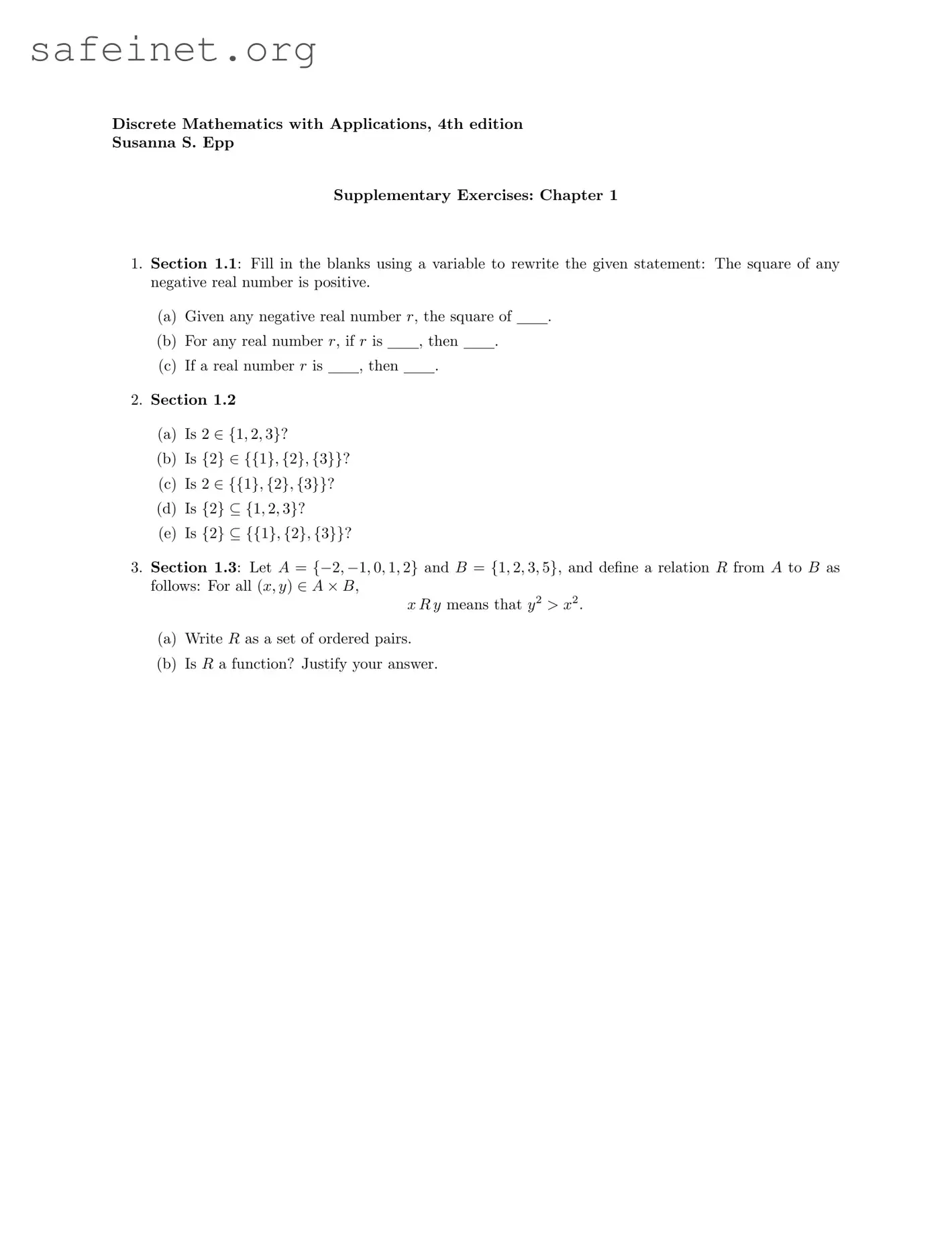The SAT (Scholastic Assessment Test) is a standardized test used for college admissions in the United States. Like the Discrete Mathematics Application form, it requires students to demonstrate their problem-solving skills in a structured way. Test-takers encounter various types of questions, some of which involve logical reasoning and mathematical concepts. Both documents assess a student’s understanding of fundamental principles and their ability to apply those principles in different contexts.
The ACT (American College Testing) is another standardized test that serves a similar purpose to the SAT. It covers subjects like math, science, and English, allowing students to showcase their academic strengths. Just as the Discrete Mathematics Application form challenges students with specific problems related to discrete math, the ACT presents a range of questions that test not only knowledge but also the application of that knowledge under timed conditions.
The GRE (Graduate Record Examinations) is a standardized test for admission to many graduate schools. It consists of verbal reasoning, quantitative reasoning, and analytical writing sections. Like the Discrete Mathematics Application form, the GRE demands critical thinking and problem-solving abilities. Both assess a candidate's readiness for advanced-level studies through analytical tasks that require a solid foundation in mathematics.
The AP Calculus exam, part of the Advanced Placement program, evaluates a student’s understanding of calculus concepts. Similar to the Discrete Mathematics Application form, it features a variety of problems that require analytical skills and the application of mathematical principles. Both documents serve to challenge students and prepare them for higher educational pursuits by evaluating their grasp of complex mathematical ideas.
The LSAT (Law School Admission Test) gauges skills necessary for success in law school. It includes logical reasoning and analytical reasoning sections, akin to the critical thinking involved in the Discrete Mathematics Application form. In both cases, the ability to dissect complex problems and formulate coherent arguments is essential for achieving a high score, ultimately directing students toward their academic and professional goals.
The MCAT (Medical College Admission Test) is necessary for aspiring medical students and assesses knowledge across various scientific disciplines. It requires critical thinking and problem-solving skills, similar to what is found in the Discrete Mathematics Application form. The MCAT’s rigorous format and analytical questioning echo the structure of mathematics problems, as both prepare students for their respective fields through challenging and comprehensive assessments.
The Common Application is a college admission application used by many schools. While it is not a test like the Discrete Mathematics Application form, it shares a similar purpose—to evaluate potential students. Applicants use it to showcase their achievements and skills, including mathematical reasoning, which can be reflected in the application’s supplementary material. Both serve as tools that help institutions assess an applicant's readiness for academic challenges.
The FAFSA (Free Application for Federal Student Aid) is crucial for students seeking financial aid for college. It shares a common goal with the Discrete Mathematics Application form: to facilitate access to educational opportunities. Like the discrete math form, FAFSA requires careful attention to detail and accurate completion of information, emphasizing the importance of logical reasoning and precision in both financial and academic settings.
The GMAT (Graduate Management Admission Test) is designed for business school applicants. It emphasizes analytical writing and problem-solving skills, reflecting the thought processes often needed in mathematics. Much like the Discrete Mathematics Application form, the GMAT tests the ability to apply concepts in a structured manner, preparing candidates for the demands of graduate education in business.
The GRE Subject Test in Mathematics focuses specifically on mathematics topics, evaluating knowledge in various areas. This test is highly specialized, paralleling the intent of the Discrete Mathematics Application form, which is also focused on specific mathematical concepts. Both documents aim to assess deep understanding and application of mathematical principles and are utilized by educational institutions to gauge readiness for more advanced study in mathematics.
